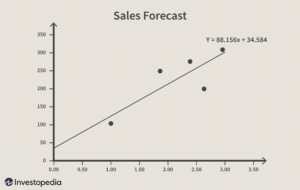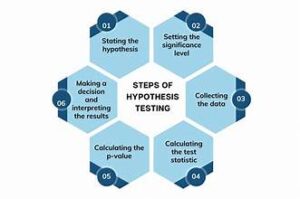
In today’s rapidly evolving business environment, accurate forecasting is crucial for strategic planning and decision-making. One of the most effective methods for predicting future trends is linear regression, a statistical technique that models the relationship between a dependent variable and one or more independent variables. This comprehensive guide will delve into the essentials of linear regression models, their application in business forecasting, and best practices for optimizing these models in 2024.
Understanding Linear Regression Models
Linear regression is a fundamental tool in statistical analysis, widely used for its simplicity and effectiveness. It involves fitting a line (regression line) to a set of data points, where the equation of the line (y = mx + b) represents the relationship between the variables. Here, ‘y’ is the dependent variable, ‘x’ is the independent variable, ‘m’ is the slope of the line, and ‘b’ is the y-intercept.
Types of Linear Regression
- Simple Linear Regression: This involves a single independent variable. It is used when there’s a straightforward relationship between the dependent and independent variables.
- Multiple Linear Regression: This extends the simple linear model by incorporating two or more independent variables. It’s useful for more complex scenarios where multiple factors influence the dependent variable.
Applications in Business Forecasting
Linear regression models are invaluable for various business applications, including:
- Sales Forecasting: Predicting future sales based on historical data and external factors such as market trends, economic indicators, and seasonal variations.
- Financial Forecasting: Estimating future financial performance, including revenue, expenses, and profit margins, to aid in budgeting and strategic planning.
- Demand Forecasting: Anticipating customer demand to optimize inventory levels, reduce holding costs, and improve supply chain efficiency.
- Market Analysis: Understanding market trends and consumer behavior to make informed marketing and product development decisions.
Building a Linear Regression Model
Data Collection and Preparation
The accuracy of a linear regression model heavily depends on the quality of the data used. Here are the steps for effective data preparation:
- Data Collection: Gather relevant historical data. Ensure the data is comprehensive and covers all necessary variables that could impact the dependent variable.
- Data Cleaning: Handle missing values, remove outliers, and ensure data consistency. Clean data helps in building a more reliable model.
- Data Transformation: Standardize or normalize data to ensure all variables are on a similar scale, especially important in multiple linear regression.
Model Building
- Selecting Variables: Choose the independent variables that have the most significant impact on the dependent variable. This can be done through correlation analysis and domain expertise.
- Splitting Data: Divide the dataset into training and testing sets. Typically, 70-80% of the data is used for training, and the remaining 20-30% for testing.
- Fitting the Model: Use statistical software or programming languages like Python or R to fit the regression model to the training data.
- Evaluating the Model: Assess the model’s performance using metrics such as R-squared, Mean Absolute Error (MAE), and Root Mean Squared Error (RMSE). These metrics indicate how well the model explains the variability of the dependent variable and its prediction accuracy.
Optimizing Linear Regression Models in 2024
With advancements in technology and data science, there are several strategies to enhance the accuracy and reliability of linear regression models:
- Feature Engineering: Create new features from existing data to improve model performance. This could involve combining variables or creating interaction terms.
- Regularization Techniques: Apply techniques like Ridge Regression or Lasso Regression to prevent overfitting, especially in models with many predictors.
- Cross-Validation: Use cross-validation techniques to assess the model’s performance across different subsets of the data, ensuring it generalizes well to unseen data.
- Automated Machine Learning (AutoML): Utilize AutoML tools to automate the process of model selection, hyperparameter tuning, and feature engineering, making it easier to develop robust models.
- Integration with AI: Incorporate AI and machine learning algorithms to enhance predictive accuracy. For instance, hybrid models that combine linear regression with neural networks can capture both linear and non-linear relationships.
Challenges and Considerations
While linear regression models are powerful, they come with certain challenges:
- Assumption Violations: Linear regression assumes a linear relationship, homoscedasticity, independence, and normality of residuals. Violations of these assumptions can lead to inaccurate predictions.
- Multicollinearity: In multiple linear regression, multicollinearity between independent variables can distort the model’s estimates and reduce predictive power.
- Overfitting: A model that fits the training data too well may not generalize to new data. Regularization techniques can help mitigate this issue.
- Data Quality: Poor quality data can lead to unreliable models. Ensuring data accuracy, relevance, and completeness is crucial.
Conclusion
In 2024, linear regression remains a cornerstone of business forecasting, offering simplicity, interpretability, and effectiveness. By understanding the fundamentals, applications, and best practices for optimizing these models, businesses can make more informed decisions and achieve better outcomes. As technology evolves, leveraging advancements in data science and AI will further enhance the predictive power of linear regression models, ensuring businesses stay ahead of the curve.



